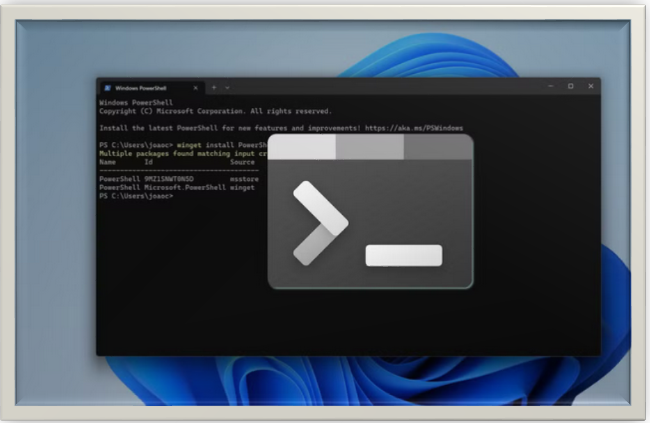A BEGINNER’S GUIDE TO BOOSTING YOUR COMPUTER’S SPEED: INSTALLING RAM
Discover the secrets to boosting the speed of your PC! Learn step-by-step how to install RAM for lightning-fast performance. Say goodbye to lag with our guide!

INTRODUCTION:
Is it taking forever for your computer to load programs? Do you wait for online sites to load all the time? Computers can become slow and congested over time, which can lead to perplexing gradualness. But do not worry! You may simply revive your system and get it operating smoothly again by following a few easy steps. We'll look at various methods to speed up your computer in this easy-to-follow guide, and we'll even go into how to install additional RAM (Random Access Memory) for a more crucial performance upgrade.
Recognizing the culprits of slowness
Before making any plans, let's discuss a few typical causes of computers slowing down:
· Lack of RAM: RAM is necessary since it serves as your computer's temporary memory. Sluggishness results from your system having to rely on the slower hard drive, when it is full.
· Many starting Programs: As a result, many programs automatically launch as soon as you turn on, using resources and lengthening the starting time.
· Transient Files and Clutter: Over time, a collection of temporary files accumulates, using valuable disk space and interfering with operation.
· Outdated Software: Outdated software may contain errors and inefficient features that impede its functionality.
· Malware and Infections: Malevolent software can steal resources and slow down your system.
Easy Ways to Increase Computer Speed (Without Opening the Case)
The good news is that you don't need to be a computer specialist to achieve many operational improvements. Here are some tactics that are suitable for beginners to try:
1. Clear Your Desktop and Documents:
A disorganized desktop and excessive storage might slow things down. Sort your documents into folders, uninstall unnecessary apps, and think about using cloud storage for documents that you use periodically.
2. Uninstall Unused Programs:
Unused programs can run background processes and steal resources in addition to wasting capacity space. Regularly review the programs you've installed and remove those that you no longer need.
3. Manage startup programs:
A lot of apps configure themselves to launch at startup, which impacts boot speed and system operation. Make use of the integrated tools within your operating system (OS) to deactivate unnecessary startup applications.
· Windows: Look for "Startup Apps" in the Start menu and disable any apps you don't need to run at startup.
· Mac: Go to System Preferences > Users & Groups > Login Items. Uncheck the apps you don't need to run automatically.
4. Clean Up Temporary Files:
Over time, temporary files accumulate and can complicate your system. Use your operating system's built-in Disk Cleanup tool to remove these temporary files.
· Windows: Choose your system drive by searching for "Disk Cleanup" in the Start menu. Choose the kind of files you want to clean, then click "Clean up system files" for a deeper clean.
· Mac: Make use of the "Other Storage" section in your “About This Mac storage information”. Click "Manage" to identify and remove large temporary files or program data.
5. Defragment Your Hard Drive (For HDDs only):
This process reorganizes fragmented data on your hard drive (HDD) to enable faster access times. For Solid State Drives (SSDs), which are already incredibly fast, this step is not necessary.
Windows: Look for "Defragment and Optimize Drives" and choose the drive that is giving you trouble. Click "Optimize" to start the process.
6. Update Your Software:
Outdated software may contain errors and problems with operation. Upgrade your operating system, drivers, and apps regularly to ensure optimal performance and security.
7. Disable Visual Effects (Discretionary):
On more seasoned or less capable systems, reducing unnecessary visual effects helps improve performance.
· Windows: Look for "System Properties" and select "Advanced System settings." Click "Settings" under "Performance," then choose "Adjust for best performance."
· Mac: Navigate to System preferences > Accessibility > Display. Uncheck "Reduce Motion" to improve performance just a little bit.
8. Scan for Malware and Viruses:
Malicious software can completely compromise your system. Using a reliable antivirus tool, regularly scan your computer to identify and remove any threats.
Installing More RAM for a Critical Speed Boost
This beginner-friendly guide will help you increase the RAM on your computer to speed it up.
What is RAM and why does it matter?
RAM has a big impact on how well your computer runs. Consider it your system's short-term memory, where data that your computer is efficiently using is stored. Programs and files are loaded into RAM for quick access by the CPU (Central Preparing Unit) after they are opened. In the unlikely event that your RAM is insufficient, your computer can struggle to process requests, which could result in lags and problems with performance.
If the previous steps don't move things along quickly enough, think about adding more RAM. RAM directly affects how many apps your computer can run smoothly at once. Here is a breakdown of installing RAM:
Before you begin:
1. Verify Your RAM Compatibility:
RAM requirements vary depending on the computer. Consult the manufacturer's website or the handbook for your computer to determine the maximum capacity and the compatible RAM type. Additionally, you can find compatible upgrades for your specific computer model by using online tools from reliable RAM producers.
2. Selecting Your Desired Amount of RAM:
Even if more RAM often performs better, you don't want to spend too much money on unnecessary upgrades. Analyze how often you use the computer. Eight gigabytes of RAM should be plenty if you are a light user who uses office apps and surfs the internet. Think about using 16GB or more for more demanding jobs like gaming or video editing.
3. Selecting the Appropriate RAM
It's time to purchase the new memory modules after you've determined how much RAM you want and whether your computer is compatible with them. Purchase from reputable manufacturers without a doubt to ensure compatibility and unwavering quality. RAM modules can be found in computer equipment stores or online merchants.
4. Prepare Your Device:
Before installing the new RAM, turn off your computer and disconnect it from the power supply. By the manufacturer's instructions, open the computer case. Sort the RAM modules that are in use and locate the empty slots for new ones.
5. Installing the new RAM:
Take caution when handling the RAM modules to prevent damaging them with static power. Once the notches on the module have been aligned with the ridges in the RAM slot, gently press down until the clips on either side tap into place. Make sure the module is positioned inside the slot securely.
6. Testing your Upgrade:
Reconnect all of the cables and close the computer case after installing the new RAM, then turn on your machine. To confirm that the new RAM is detected and installed correctly, check the system properties. To observe the improvement, you can also monitor system performance or run benchmark tests.
7. Enjoy your Faster Computer:
With the new RAM installed, you should have noticed a significant improvement in the performance and responsiveness of your computer. Enjoy faster program dispatches, more seamless multitasking, and an overall improved computing experience.
CONCLUSION
By following these easy steps, even beginners can increase the speed of their computer by adding more RAM. It's an affordable upgrade that can revitalize your system without requiring advanced specialized skills. Why then do you hold back? Upgrade your RAM immediately to enjoy a faster, more efficient computer experience!
Thanks for reading.
If you like the article, consider sharing and subscribing. ;)




